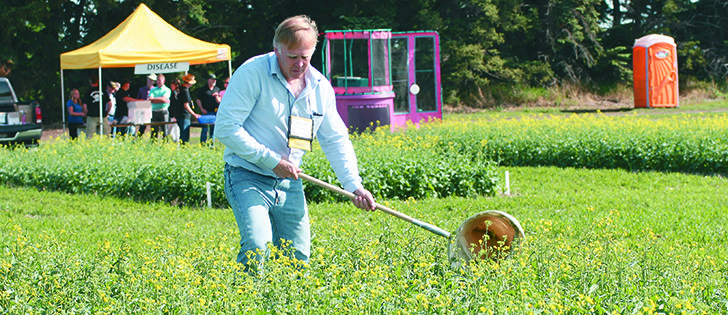Conditions in Alberta are ideal for lygus bugs and grasshoppers
LACOMBE, Alta. — Scott Meers filled a glass jar with bertha armyworm moths and invited people to count the insects and win a prize.
The moths had been collected from insect traps across Alberta.
Meers, the government’s provincial entomologist, said finding that many worms means the insect could be a bother this summer.
A warmer and drier than normal spring provided the perfect environment for insect pests such as armyworms, lygus bugs and grasshoppers.
Maps released earlier this year did not indicate widespread problems, but things change.
Read Also

U.S. government investigates high input costs
The USDA and DOJ are investigating high input costs, but nothing is happening in Canada.
“Insects never follow the rules,” Meers said at an Alberta Canola Producers Commission field day in Lacombe June 23.
“This is the perfect season for lygus,” he said. “Lygus likes warm and dry, so I expect we are going to have lygus for sure.”
Alberta Agriculture staff and agriculture fieldmen are monitoring more than 300 pheromone traps that lure male bertha armyworm moths. Large numbers are showing up on the eastern side of the province, according to weekly counts.
Thirty traps are looking for Swede midge and wheat midge, but those insects have not been found.
No cabbage seed pod weevils have been found this year either.
Different types of grasshoppers are appearing.
“These are absolutely ideal conditions for grasshoppers, not so ideal for farmers,” Meers said. “The critical time for grasshoppers is from hatching in mid-May to the end of June. They are mostly out because we have had such a warm spring.”
Grasshoppers are vulnerable to heavy rainfall and cooler weather, but they are likely to be active this year if current conditions continue. The next survey is in August to determine the population for next year.
Alberta Agriculture specialists monitor seven insects, assisted by agricultural fieldmen, agronomists and researchers.
Surveys are designed to enable early warning of potential problems.
















